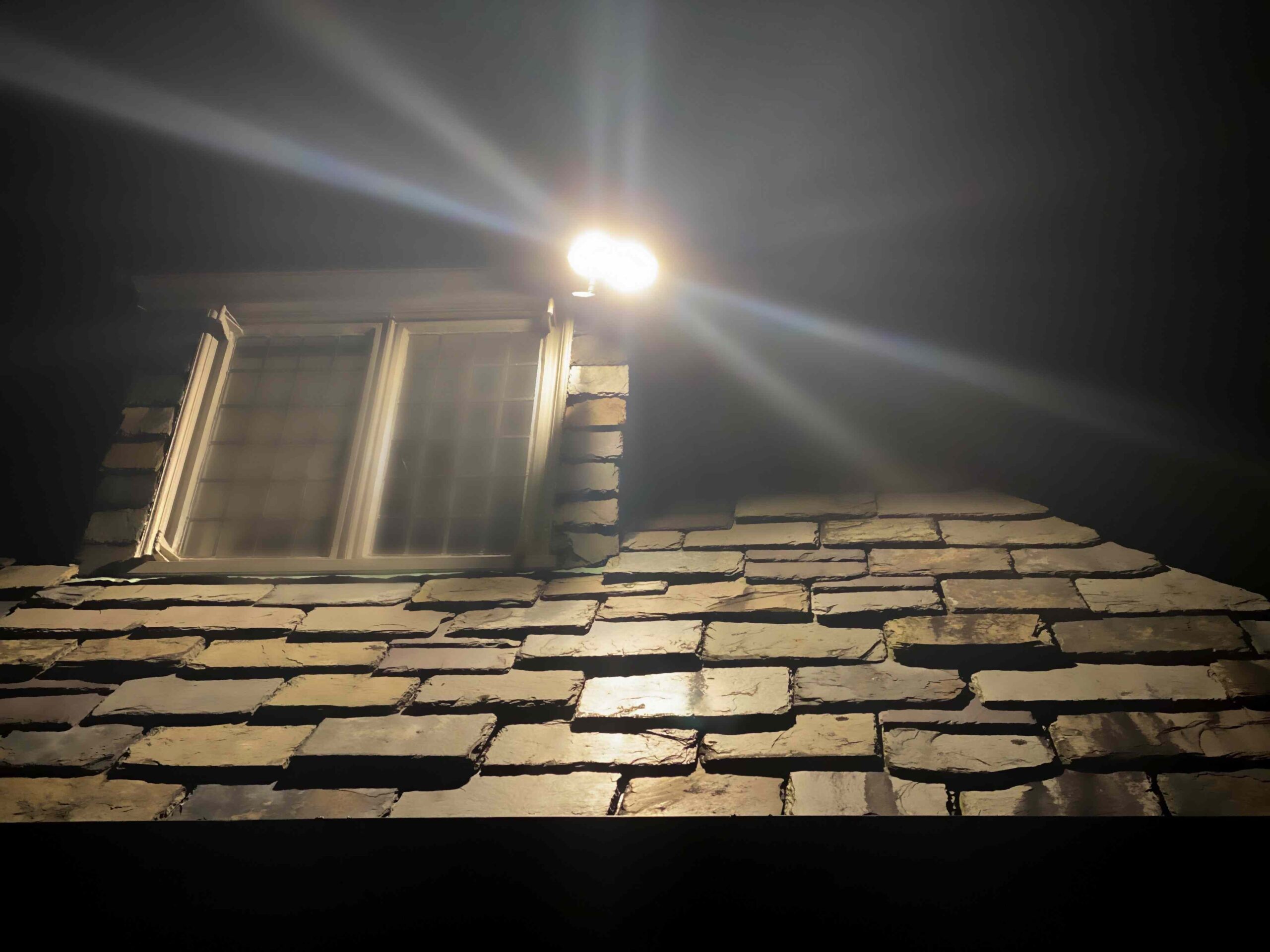Key Points
- Unwanted outdoor lighting from neighbors can disrupt sleep and daily life.
- LED lights are problematic because they’re brighter and cheaper to operate than incandescents.
- Solutions include friendly conversations, adding shields, or changing to motion-activated lights.
No one enjoys light shining in their house. In the bedroom, it disrupts sleep. In the rest of the house, it’s distracting and annoying.
Outdoor lighting from an uncooperative neighbor falls in a legal gray area. Solutions require social finesse; resolving the issue with a well-aimed rock is never a good option.
So, what is outdoor lighting etiquette, and how do you solve the problem?
“Like Trying to Sleep in a Football Stadium”
In a lively Reddit thread, a homeowner complains that a neighbor recently installed bright floodlights on the side of his house.
The homeowner was nonchalant about the floodlights until the first night, when he realized they were “angled directly” toward his bedroom window—an experience akin to sleeping in a football stadium.
The homeowner asked the offending neighbor to adjust the lights. Instead of compliance, the neighbor styled the problem as a win for the homeowner, saying, “It’s for your safety, too,” since criminals supposedly “hate light.”
The neighbor thinks the light is perfectly okay, while the homeowner wonders if they’re overreacting and how to handle the situation.
Want more home reno project tips and inspiration? Sign up for our free daily newsletter for the latest how-tos, reno guides, and more!
A Plethora of Fanciful Solutions
Seeking solid, real-world solutions, the homeowner instead receives solutions bordering on pure fantasy and creative retaliation, with touches of humor.
Many commenters suggest installing a floodlight or reflective devices, like a mirror, reflective window film, or foil.
Others propose that the homeowner should retaliate with wind chimes, inflatables, flags, or water pistols.
Better approaches to the problem suggest contacting the authorities, filing formal complaints, or requesting code enforcement.
A Problem Made Worse by Technology
Unwanted outdoor lighting is an increasing problem. Annoying floodlights have been around for ages, but a recent advancement has exacerbated the problem: LED lighting.
Bright-white and intense, LED lights are more annoying than incandescent bulbs. The light can pierce through thin curtains. Its glare creeps farther than incandescent light.
It’s also cheaper to operate LED lighting. This means that a neighbor can leave the light on for longer periods while spending less on electricity. With LED outdoor light bulbs, there’s virtually no financial incentive to turn off the switch.
Outdoor Lights Etiquette—and Laws
Many communities have enacted ordinances that regulate unwanted nighttime lighting, also referred to as light trespass or light pollution.
Combining these laws with rules proposed by Dark Sky International, a non-profit focused on limiting light pollution, outdoor lights etiquette has four key features:
Have a Purpose
The outdoor lights should serve a clear purpose, such as safeguarding a carport or side yard. Randomly placed outdoor lighting benefits no one.
Target Specific Areas
Light should be directed to the areas that need to be illuminated (such as a shed or yard), and not on the neighbor’s house. Glare or spill light should be limited.
Limit Illumination Periods
City ordinances generally prohibit constant nighttime lighting between 11:00 pm and dawn. Use of timers and motion detectors is encouraged.
Use Side Shielding
Lights should have side shields. Not only does this limit spill light for neighbors but it also improves the quality of the light. Ordinances typically require shields for lights over 1,800 lumens.
6 Possible Solutions
Can you get a neighbor to cooperate with outdoor lights etiquette? If the neighbor won’t work with you, what are your options?
- Have a conversation: Speak to the neighbor. Bring them to your side of the property and show them how the light looks from your angle. The neighbor may legitimately be unaware of the extent of the light trespass on your property.
- Be understanding: The conversation isn’t just about helping the neighbor understand your misery. Understand their motivation for having the light, such as safety.
- Suggest alternatives: When speaking to the neighbor, be proactive. Suggest re-angling the light, adding side shields, or adding a motion sensor.
- Explain the costs: If the neighbor has incandescent outdoor lights, mention that they are very expensive to run. On average, electricity in the United States costs $0.17 per kilowatt-hour. For example, running a 1,000-watt outdoor floodlight for 10 hours a night costs about $620 per year.
- Protect yourself: If the neighbor won’t help, take actions to shield the light on your side of the property line. Grow fast-growing bamboo in galvanized steel containers. Install blackout curtains on your windows.
- Seek help: DarkSky International suggests escalating the matter only as a last resort. Write a letter to the neighbor. Check your local light trespass ordinances. Locate the local agency responsible for enforcing these ordinances.











